Living here in Colorado, you’re probably aware of altitude sickness, or what is sometimes referred to as mountain sickness.
Many people come into our state from sea level, grab a car, and start climbing deep into the hills. They settle into a resort, and start playing. Shortly after, they experience headaches, dizziness, nausea, fatigue, shortness of breath, and more.
High altitude sickness is real, and it’s something that shouldn’t be taken lightly. But that’s with people. Can the same thing happen with a car? Can high altitude impact your car maintenance routine? Do cars driven here in the Rocky Mountains need more TLC than cars at sea level?
How high altitude impacts your car
Cars are manufactured in different parts of the world, and are brought into different regions based on needs and desires. The car you recently purchased here in Denver may have spent all of its life at sea level before being brought here. It may have been calibrated differently to accept conditions for where it was created.
For used cars, the vehicle adjusted to the conditions where it operated. At sea level, that means plenty of oxygen, possibly greater humidity levels, maybe even salty sea air speeding up the rusting process. Its condition is determined by the conditions in which it operates each day.
Then the car migrated here, to Colorado. The most noticeable condition is less air density. Every time your car is turned on, lower air density means less compression, which in turn impacts the way fuel components are triggered and used in the combustion process. Less density means the engine pulls less oxygen, nitrogen and argon as it moves through the process, which equates to less power used in operating your car.
In the industry, guidelines state that for every thousand feet of altitude gained, you’ll lose 3 percent power. That means here in Denver, you might feel your engine performance is a bit sluggish, especially if you’re used to driving your car at lower altitudes. Now bring it up into the mountains. You will notice the difference.
 Reduced oxygen intake means the engine struggles to bring in enough air to feed into the system. This can lead to poor performance as well as inefficiencies. It can impact everything from acceleration to towing capabilities.
Reduced oxygen intake means the engine struggles to bring in enough air to feed into the system. This can lead to poor performance as well as inefficiencies. It can impact everything from acceleration to towing capabilities.
It’s not just the engine. You may also notice a change in the fuel system. Cars driven here require lower fuel octane than in other areas to start and keep the engine running. However, as you drive down to lower elevations, that can quickly change. If your check engine light comes on, this could be the cause.
It can also impact tire pressure. If you’ve ever driven from the hot plains to a cold mountain top, you know what that temperature difference can do to your body. Now think about your tires. It can rapidly change the performance of your tires, and decrease tire pressure. If you don’t check it, it can impact your steering precision, allowing for uneven tire wear, and impacting the fuel economy as you drive. If you drive into the mountains regularly, checking your tire pressure should be a normal part of your routine.
Car maintenance requirements for high altitude cars
If you’ve never considered what high altitude is doing to your vehicle before, it’s time to consider the changes your car goes through as you drive from location to location. If you’re planning a trip, it’s wise to have a tune-up before you leave to ensure your safety, and when you return to get your vehicle back in good working condition for the Colorado roads.
Things that should be checked include:
Air filters – your vehicle takes in less oxygen here in a high altitude environment. That means it pulls air harder to make the system work correctly. Maximizing airflow means keeping the system clean and working at its best. It can’t do that if the air filter is dirty or clogged.
Tire pressure – newer cars may have a sensor that tells you tire pressure. If not, it’s important to check it regularly, especially as you move in and out of the mountains. Get into the habit of checking tire pressure as you fill up with gas, or on a regular basis – monthly, perhaps. It takes a few seconds of your time, and could create a safer environment for your drive.
Brake pads – driving up and down steep mountain roads require more brake action. This can put more wear and tear on your braking systems over time. Pay attention to dashboard lights, opting to check out potential problems before they escalate.
Power steering – have you ever felt the wind on an open road push against your car, moving it slightly if you weren’t aware of the power? You’ll find that happens with more intensity here along the Front Range. You’ll also have the ability to move from the open plains to mountainous roads, all within a few hours of time. High winds can sneak up at any time, and it can impact your ability to keep your car under control, especially if your power steering system isn’t fully operational.
Fuel injectors – because your vehicle will be operating at a reduced pressure level, it’s important to keep fuel injectors clean and able to deliver fuel into the system without blockage. Depending on where you’re operating your vehicle, it may be operating at 20 percent or more reduced performance. Corroded or dirty fuel injectors will reduce that performance even more.
Do you have car maintenance in your schedule?
Regular car maintenance is always an important part of owning a car. When you live in the Mile High city, it’s even more essential.
With just a few simple checks each month, and by bringing your vehicle in for tune-ups regularly, you can ensure your car is operating at peak performance, and that your car is in the best condition possible.
Isn’t it nice to have peace of mind when you sit behind the wheel?

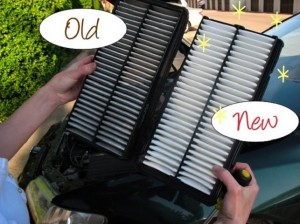 In order to run effectively, your engine needs clean air to burn fuel – and it needs a lot. In fact, a typical vehicle needs about 216,000 gallons of air for every tank of gas.
In order to run effectively, your engine needs clean air to burn fuel – and it needs a lot. In fact, a typical vehicle needs about 216,000 gallons of air for every tank of gas.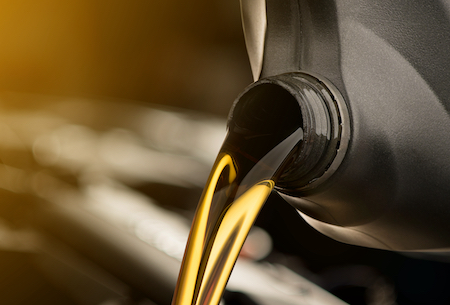 Synthetic motor oil is a human-made lubricant created by artificial chemical compounds as a substitute for petroleum-based oils.
Synthetic motor oil is a human-made lubricant created by artificial chemical compounds as a substitute for petroleum-based oils.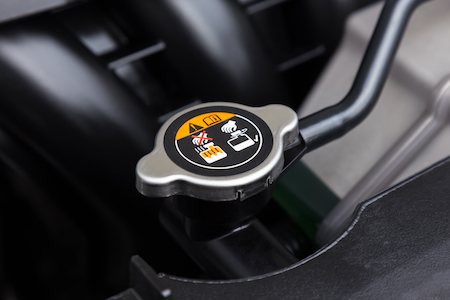 Enter your vehicle’s cooling system. It is designed to dispel heat no matter what the temperature is like outside. Winter or summer, cold or hot, engines can overheat if they aren’t running properly. It’s as important to ensure proper coolant levels in the winter months as it is in the summer.
Enter your vehicle’s cooling system. It is designed to dispel heat no matter what the temperature is like outside. Winter or summer, cold or hot, engines can overheat if they aren’t running properly. It’s as important to ensure proper coolant levels in the winter months as it is in the summer. There is another solution. Before you set out on your road trip, take action on a few car maintenance tips first. By doing a few little TLC tasks, you’ll ensure your car is in top shape when you hit the open road. You’ll decrease the chances of having an emergency stop. And you’ll keep your family safe and secure in the process.
There is another solution. Before you set out on your road trip, take action on a few car maintenance tips first. By doing a few little TLC tasks, you’ll ensure your car is in top shape when you hit the open road. You’ll decrease the chances of having an emergency stop. And you’ll keep your family safe and secure in the process. A car’s
A car’s  Question: What can I do to improve my fuel economy?
Question: What can I do to improve my fuel economy?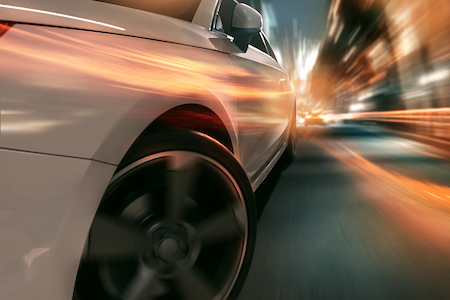 If you hear a knocking noise from the engine, it could mean your engine is low on oil. Low oil isn’t something to avoid as it can cause serious issues with your entire engine compartment. As an engine operates without proper fluid levels, the various components start failing. If the rod bearings fail, for instance, you might be replacing your engine soon. When you hear the noise, take note of where it’s coming from and how frequently you hear it. Bring it in as soon as possible to stop the problem from increasing.
If you hear a knocking noise from the engine, it could mean your engine is low on oil. Low oil isn’t something to avoid as it can cause serious issues with your entire engine compartment. As an engine operates without proper fluid levels, the various components start failing. If the rod bearings fail, for instance, you might be replacing your engine soon. When you hear the noise, take note of where it’s coming from and how frequently you hear it. Bring it in as soon as possible to stop the problem from increasing.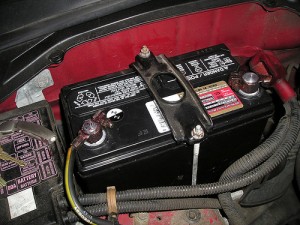 Chances are you’ve had the power go out in your neighborhood at some time, and you know how helpless that can make you feel. No lights, no microwave oven, no cold refrigerator, it’s like living in another century!
Chances are you’ve had the power go out in your neighborhood at some time, and you know how helpless that can make you feel. No lights, no microwave oven, no cold refrigerator, it’s like living in another century!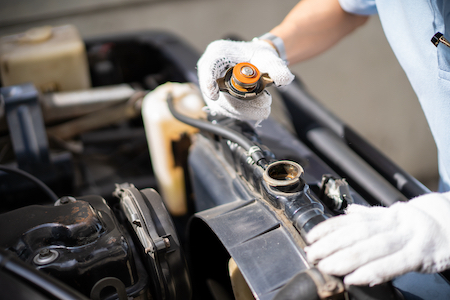 Drop in coolant levels, rise in temperature – do you keep an eye on your temperature gauge? You should. You’ll notice it remains relatively static as you drive. Coolant levels rise and fall based on engine temperature. It adjusts to keep your engine at a constant level. A quick drop in coolant levels can be a good indicator there is a leak somewhere in the system. If you think there may be a leak, fill the reservoir back up with coolant, and recheck it after a few days of normal driving. Watch the temperature gauge during this time. Does it lose fluid? If so, bring your car in for inspection as quickly as you can.
Drop in coolant levels, rise in temperature – do you keep an eye on your temperature gauge? You should. You’ll notice it remains relatively static as you drive. Coolant levels rise and fall based on engine temperature. It adjusts to keep your engine at a constant level. A quick drop in coolant levels can be a good indicator there is a leak somewhere in the system. If you think there may be a leak, fill the reservoir back up with coolant, and recheck it after a few days of normal driving. Watch the temperature gauge during this time. Does it lose fluid? If so, bring your car in for inspection as quickly as you can.